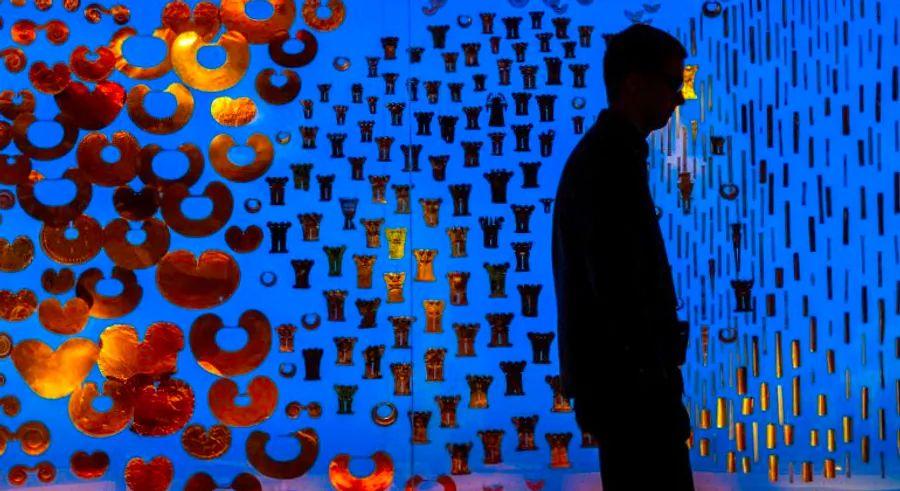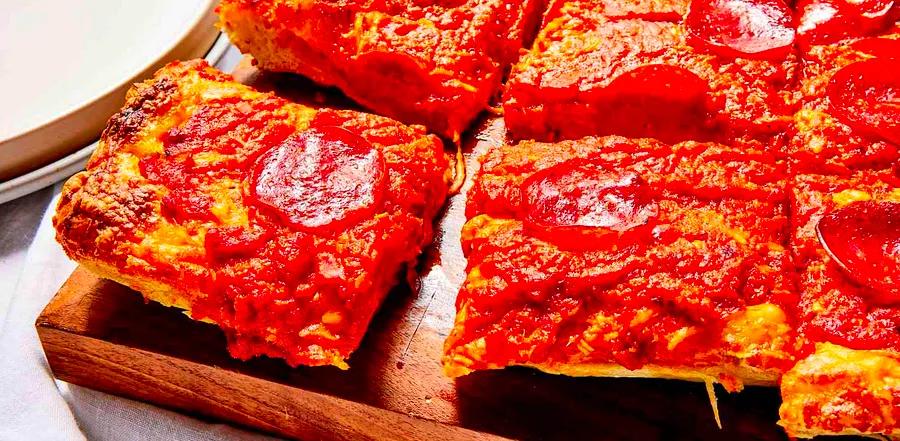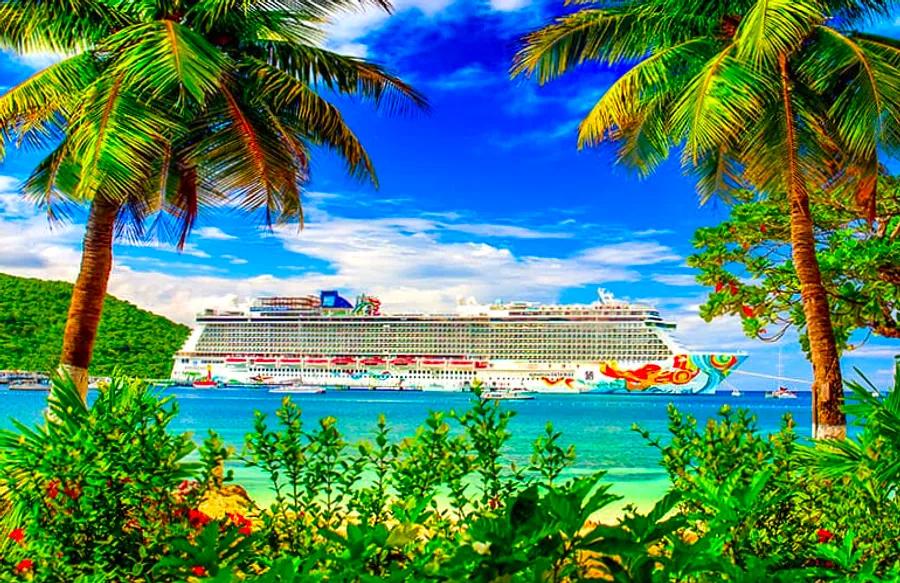Top Things to Do in Bogotá, Colombia

As one of the highest capital cities in the world, Bogotá proudly claims to be ‘2,600 meters closer to the stars.’
Though its lofty altitude (8,530 feet) may cloud the view of the stars, the city more than makes up for it with its vibrant coffee culture and rich heritage.
Here are some of the top ways to immerse yourself in this dynamic city:
Botero and Beyond
Though Bogotá may not be widely recognized for its art scene, it definitely deserves a spotlight. With over 100 art galleries, many of which offer free or affordable entry, the city is a vibrant hub for creativity. Each October, the city hosts the International Art Fair of Bogotá, a four-day event where contemporary artists from various disciplines showcase their latest works.
One of the city's leading institutions, the Museo de Arte de la Universidad Nacional, showcases some of the most innovative and bold artistic projects. Meanwhile, El Parqueadero, located on the ground floor of the Museo de Arte del Banco de la República, offers a unique space for experimental artworks, having transformed from the museum's former parking lot.
Galería MÜ is a trailblazer in the Colombian art scene, being one of the first galleries dedicated entirely to fine art photography. It highlights Colombian photographers and frequently offers workshops focusing on the history of photography.

Museo Botero is a tribute to Colombia’s iconic artist Fernando Botero, known for his distinctive style featuring exaggeratedly round women and fruits. Set in a stunning colonial mansion with rooms that surround a tranquil courtyard, the museum is free to visit. It boasts 208 pieces from Botero’s collection, including 123 works created by him and 85 pieces from his personal collection, which features masterpieces by renowned artists like Picasso, Monet, and Chagall.
A glimpse at the city’s vibrant murals reveals the energy of Bogotá’s unique street art scene. Local artists are given the freedom to transform the city’s walls into colorful canvases, creating an ever-evolving outdoor gallery that invites conversation and admiration.
Bogotá’s street art culture is an essential part of the city’s identity, with murals and graffiti adorning buildings throughout. This urban canvas serves as a dynamic expression of local talent and creativity, offering a fresh perspective on the city’s spirit.

The Bogotá Graffiti Tour, true to its name, offers two free tours daily. The city’s street art provides a fascinating lens through which to explore Bogotá’s complexities, offering a powerful way to grasp the social and political messages embedded in this creative expression.
Cultural explorations abound in Bogotá, where Latin American history takes center stage in the city’s most prominent museums. While the renowned Museo del Oro (Museum of Gold) is a must-see, showcasing over 55,000 pieces of gold, there are many other hidden gems waiting to be explored, each telling its own story of the region’s rich cultural heritage.
For a deep dive into the cultural tapestry of Bogotá, visit its diverse museums. In addition to the famous Museo del Oro, with its extraordinary collection of sacred Amazonian gold artifacts, the city boasts many more venues where you can immerse yourself in Colombia’s history and art.
Santa Clara, once a church and now a museum, is a beautifully preserved colonial-era building dating back to the 1600s. For less than a dollar, you can step into this historical gem and admire religious artworks, intricate golden floral designs, and statues created by Colombia’s finest Baroque artists.

Housed in a former prison designed by English architect Thomas Reed in 1874, the Museo Nacional de Colombia is a treasure trove of ethnology, art, and archaeology, with exhibits spanning over 12,000 years of history across 17 diverse exhibition rooms.
A visit to the Museo Colonial is a must for history lovers. Built in 1610 as a Jesuit school, this museum is housed in a building that is itself a piece of history, showcasing an impressive collection of paintings, sculptures, antique furniture, and decorative art.

A cup of coffee
No trip to Bogotá would be complete without savoring its coffee culture. While the city may not be situated within Colombia's coffee triangle, the region known for producing the country’s finest beans, a growing number of coffee shops have popped up in recent years, as Colombia now keeps more of its premium beans for local enjoyment.
In the past, Colombians brewed up pasilla, a strong, bitter coffee made from the leftover grounds, which was often served as tinto, a harshly brewed drink. Fortunately, times have changed, and while you'll still find locals sipping tinto from street vendors, the quality coffee in Bogotá is now something you can’t miss.

Both Lucia Londoño Tostadores and Varietale provide exceptional coffee tasting tours within the city, offering an immersive experience where visitors can discover the entire coffee process—from cultivation and harvesting to roasting and brewing—helping them become true coffee aficionados.
For those who want to skip the learning and dive straight into the coffee, Bogotá offers a wealth of incredible coffee options to explore.
Arte y Pasión Café, located in Plaza Bolívar, is a quaint, vintage coffee shop with a cozy atmosphere. Amor Perfecto, found in Chapinero, is one of Colombia's trailblazing specialty coffee shops, famous for its award-winning coffee and innovative brewing methods, including the honey process—where beans are dried in their own pulp for a naturally sweeter flavor.
Azahar, situated in Parque de la 93, is a trendy café committed to using coffee sourced directly from farmers, with complete transparency about their pricing, creating a customer-friendly experience.
A marketplace filled with unique and locally crafted treasures.
A visit to Usaquén is definitely worth the effort. This neighborhood blends old-world charm with a modern vibe, offering a lively food scene that will not disappoint.
The highlight of the area is the Sunday flea market, open from around 10 a.m. to 6 p.m. (give or take—this is Colombia, after all). The market is a treasure trove of locally made crafts, from pottery and jewelry to shoes, soap, and artisanal food items.
Climbing for a view and hunting for unique species.
A visit to Monserrate on a clear day elevates you even further for breathtaking panoramic views of the city. You can take the funicular, which offers a thrilling, somewhat wobbly ride, or brave the numerous stairs. At the summit, you'll find a church and a couple of overpriced restaurants, but the real draw is the stunning city skyline.
For a peaceful retreat, head to the Bogotá Botanical Garden. This serene green space offers a break from the city's hustle and bustle and showcases Colombia's incredible biodiversity, with a special focus on Andean and páramo plant species.

The Flavors of Colombia
One of the highlights of Bogotá is its thriving culinary scene. Thanks to a favorable exchange rate, visitors can indulge in world-class, Michelin-level cuisine without draining their wallets.
Leonor Espinosa is one of Colombia's most celebrated chefs, known for her commitment to using fresh, locally sourced ingredients and incorporating cultural heritage into her dishes. At LEO, her signature restaurant, she offers a remarkable 13-course tasting experience.

At Matiz, each plate is a masterpiece, with ingredients sourced from both land and sea, making every dish a work of edible art.
For a more traditional, homey experience, head to La Puerta Falsa (False Door) in La Candelaria, where you can enjoy a bowl of hearty ajiaco soup, made with three varieties of potatoes, chicken, avocado, and rice, and finish with a mug of rich hot chocolate paired with almojabana bread for dipping.

A must-visit location is Andrés Carne de Res, located in Chía, about an hour's drive from Bogotá, depending on your location. But the real draw for most visitors isn’t the food – it’s the lively party atmosphere.
Perfect for the pre-pandemic days, this massive restaurant, with seating for 2,000 people, often has to turn guests away. Its menu spans 40 pages, diners often leave their seats mid-meal to dance on one of five dance floors, and, for reasons unknown, there's a 25-foot climbing wall.
In addition to the DJ, there are several live bands, and for those too exhausted to head back to the city, there are hammocks available in the parking lot to rest in before the journey home.
Evaluation :
5/5



